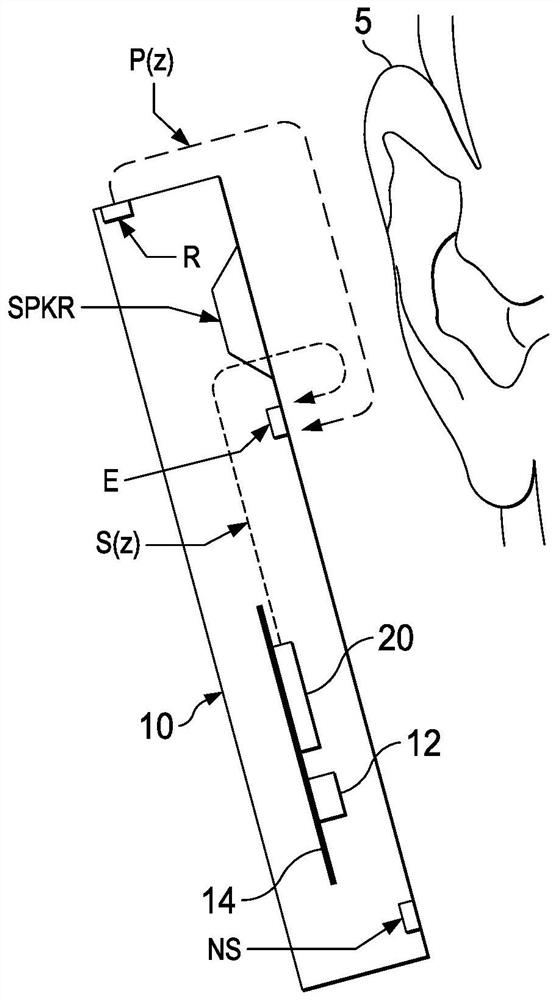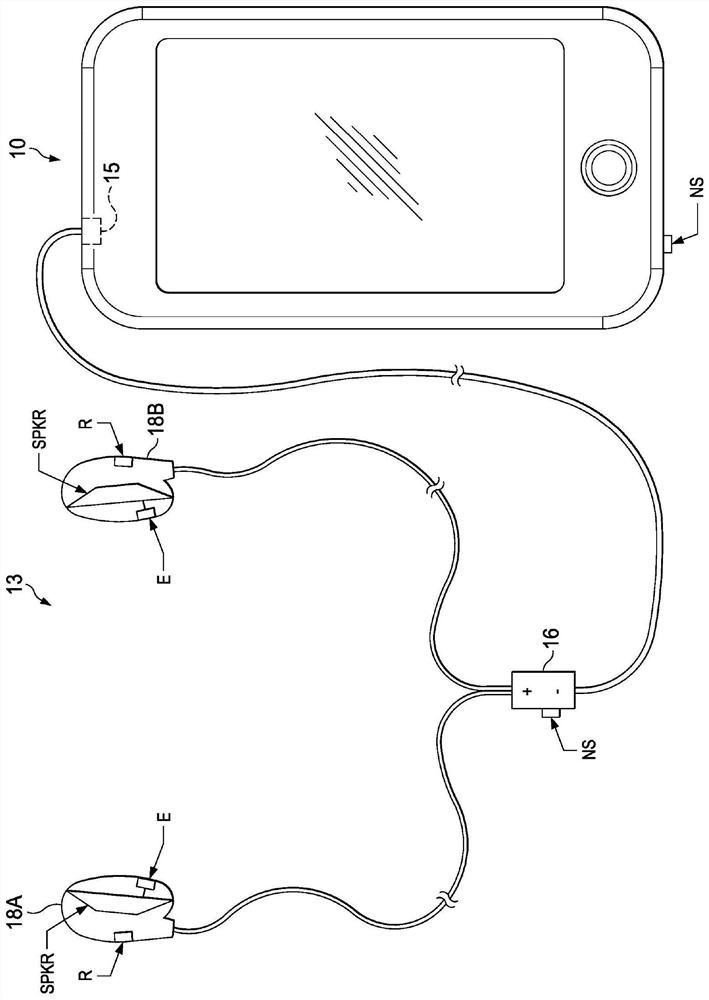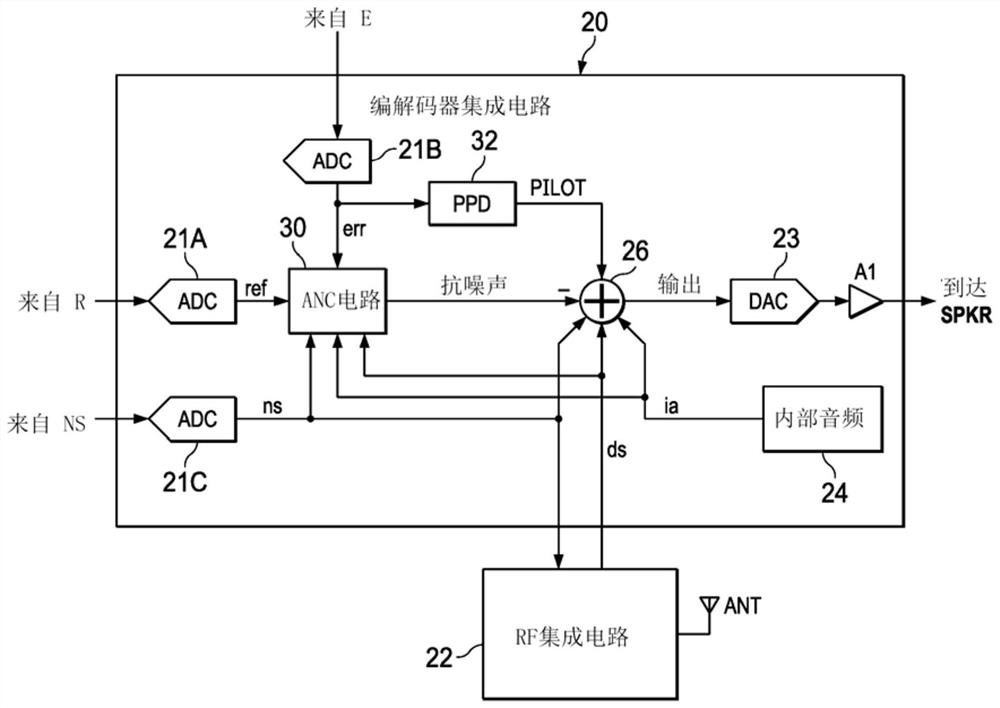Pinna proximity detection
A technology of proximity and auricle, applied in earpiece/headphone accessories, earphones to reduce environmental noise, signal processing, etc., can solve problems such as consumption, not working well, high power, etc.
- Summary
- Abstract
- Description
- Claims
- Application Information
AI Technical Summary
Problems solved by technology
Method used
Image
Examples
Embodiment Construction
[0039]The present disclosure includes noise cancellation techniques and circuits that can be implemented in personal audio devices such as wireless phones. The personal audio device includes an ANC circuit that can measure the surrounding sound environment and generate a signal, which is injected into the speaker (or other transducer) output to eliminate the surrounding sound events. A reference microphone can be provided to measure the surrounding sound environment, and may include an error microphone to control adaptive anti-noise signals to eliminate an environmental audio sound, and for correcting the output of the output circuit via the transducer.
[0040]Reference nowFigure 1A The personal audio device 10 according to the embodiment of the present disclosure is shown as close to human ear 5. The personal audio device 10 is an example in which a device according to the embodiment of the present disclosure may be employed, but it should be understood that all components present in...
PUM
 Login to View More
Login to View More Abstract
Description
Claims
Application Information
 Login to View More
Login to View More - R&D
- Intellectual Property
- Life Sciences
- Materials
- Tech Scout
- Unparalleled Data Quality
- Higher Quality Content
- 60% Fewer Hallucinations
Browse by: Latest US Patents, China's latest patents, Technical Efficacy Thesaurus, Application Domain, Technology Topic, Popular Technical Reports.
© 2025 PatSnap. All rights reserved.Legal|Privacy policy|Modern Slavery Act Transparency Statement|Sitemap|About US| Contact US: help@patsnap.com



